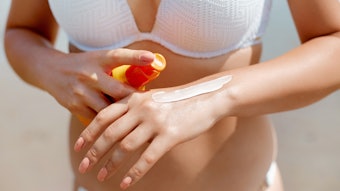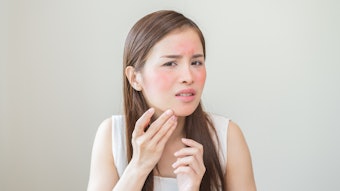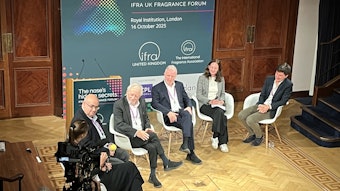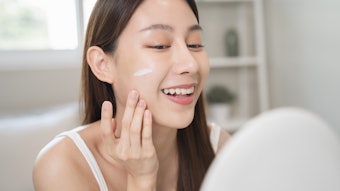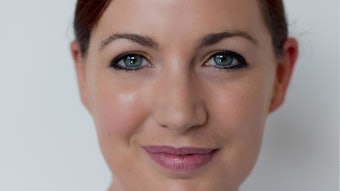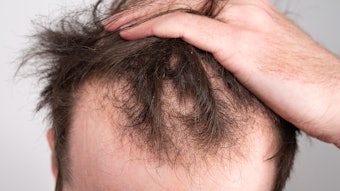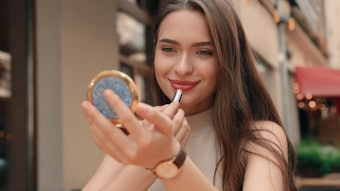Patent Picks are compiled by the editors from publicly available sources. This edition features the latest inventions related to hair care, including pigmentation, fragrance, sun protection, hair shaping and more.
15-Hydroxyprostaglandin dehydrogenase for pigment production in hair
US Patent 8735445
Publication date: May 27, 2014
Assignee: L'Oréal
According to this patent, there is a need for novel solutions that effectively promote pigmentation in both hair and skin. These inventors unexpectedly demonstrated the capability to stimulate melanin synthesis in melanocytes by inhibiting the degradation of prostaglandins synthesized by the melanocytes or those present in its environment. The present invention therefore features the formulation of at least one 15-hydroxyprostaglandin dehydrogenase inhibitor to promote pigmentation of the skin or skin appendages, in particular of the hair and/or of body hair. Inhibitors of 15-hydroxyprostaglandin dehydrogenase (15-PGDH) can include tetrazole, styrylpyrazole, phenylfuran, phenylthiophene, phenylpyrrazole, pyrazolecarboxamide, 2-thioacetamide and azo compounds.
Vanillin acetals for sensory stimulation
U.S. Patent 8735446
Publication date: May 27, 2014
Assignee: Takasago International Corp.
The present invention relates to a sensory stimulant ingredient containing one or more vanillin acetals and compositions containing it such as flavors, fragrances, beverages or food products, cosmetic products, a daily utensil product, an oral composition, or a pharmaceutical product. Said vanillin acetals show an excellent pungent and/or warming sensation effect and a cooling sensation, which emphasizes effect. Examples in which the fragrance can be incorporated include hair cosmetics, hair care products, agents for bathing and more.
Polyglycerol-based UV protection for hair, skin
U.S. Patent 8735632
Publication date: May 27, 2014
Assignee: DSM IP Assets B.V.
Disclosed in this patent are novel polyglycerol-based UV filters as well as topical compositions comprising them. The UV filters according are useful for protecting UV-sensitive organic materials, in particular hair and skin, from the harmful effects of UV radiation. These filters additionally enhance the solubility of butyl methoxydibenzoylmethane or bis-ethylhexyloxyphenol methoxyphenyl triazine in cosmetic oils.
Hydrophobicizers comprising aminoalkyl-containing polyorganosiloxanes and silicone resins
U.S. Patent 8735508
Publication date: May 27, 2014
Assignee: Wacker Chemie AG
Described herein are storage-stable polyorganosiloxane-silicone resin mixtures. Using aminoalkyl-containing polyorganosiloxanes having a certain ratio between nonreactive end groups and reactive end groups, these mixtures are stable for at least three months in the absence of atmospheric humidity, yet still have a sufficient number of reactive end groups to provide adequate cross-linking to form an elastic film in the presence of humidity. The films have a strong hydrophobicizing effect on surfaces, and are useful preferably for hard and soft porous surfaces such as wood, textiles, leather, hair, skin and stone.
Polymeric violet anthraquinone colorant compositions
U.S. Patent 8735533
Publication date: May 27, 2014
Assignee: Milliken & Company
This invention relates to polymeric violet anthraquinone colorants having at least one poly(oxyalkylene) chain attached to an anthraquinone structure. These colorants exhibit a bright violet shade, excellent compatibility with organic media or aqueous systems, good light-fastness and excellent thermal stability. The colorants also possess high water-solubility, color strength, non-staining properties and high pH stability. The processes and methods for making these colorants are also provided.
Dense chitosan membrane materials
U.S. Patent 8735571
Publication date: May 27, 2014
Assignee: Agenta Biotechnologies, Inc.
Chitosan, a natural cationic polysaccharide, and salt forms thereof, e.g., -acetate, -lactate, -chloride, -phosphate, etc., have received considerable attention as nontoxic and biodegradable biopolymers for diverse applications, especially in foods, medical devices, cosmetics and hair care. Disclosed here is an exceptionally dense chitosan and a novel method for producing it. The production method employs coincident compression and vacuum on a neutralized chitosan polymer. The resulting film or membrane possesses physically and clinically appealing qualities for a variety of applications.
Analyzing absorbent hair spray, powders and more
U.S. Patent 8737704
Publication date: May 27, 2014
Assignee: The Procter and Gamble Company
Many personal care products including hair spray, antiperspirants, toothpaste, pressed powders, etc., exhibit performance characteristics relevant to the dimensions of the product. Thus, the examination of the interior of the product or its packaging may provide information regarding these characteristics. For example: whether the product leaks and if so, where and how much; the shelf-life of a product; the fit of the product in-use; expansion or contraction of the product when stored or in-use; package integrity and how the product's constituents are distributed in the product or package; how the product reacts in a static or dynamic state; etc. Described herein is a method for analyzing an absorbent article using a three-dimensional computed tomography data set comprising a mannequin image and an article image.
Electrolytic system and method for reshaping hair
U.S. Patent 8596285
Publication date: Dec. 3, 2013
Inventors: R. Ramaprasad
Disclosed in this patent is a system and method for changing the shape of hair by breaking disulfide bridges in the keratin proteins of hair with atomic hydrogen. A hair-setting structure is provided that contains at least one cathode and at least one anode. Hair is set into a predetermined shape and wet with an electrically conductive medium. Electrolysis is induced, thereby creating hydrogen and in turn, cleaving the disulfide bonds in the keratin proteins of hair. After the disulfide bonds are broken, electrolysis is stopped and the hair is neutralized, which enables the bonds to reform, therein reshaping the hair into what is commonly referred to as a permanent wave.
